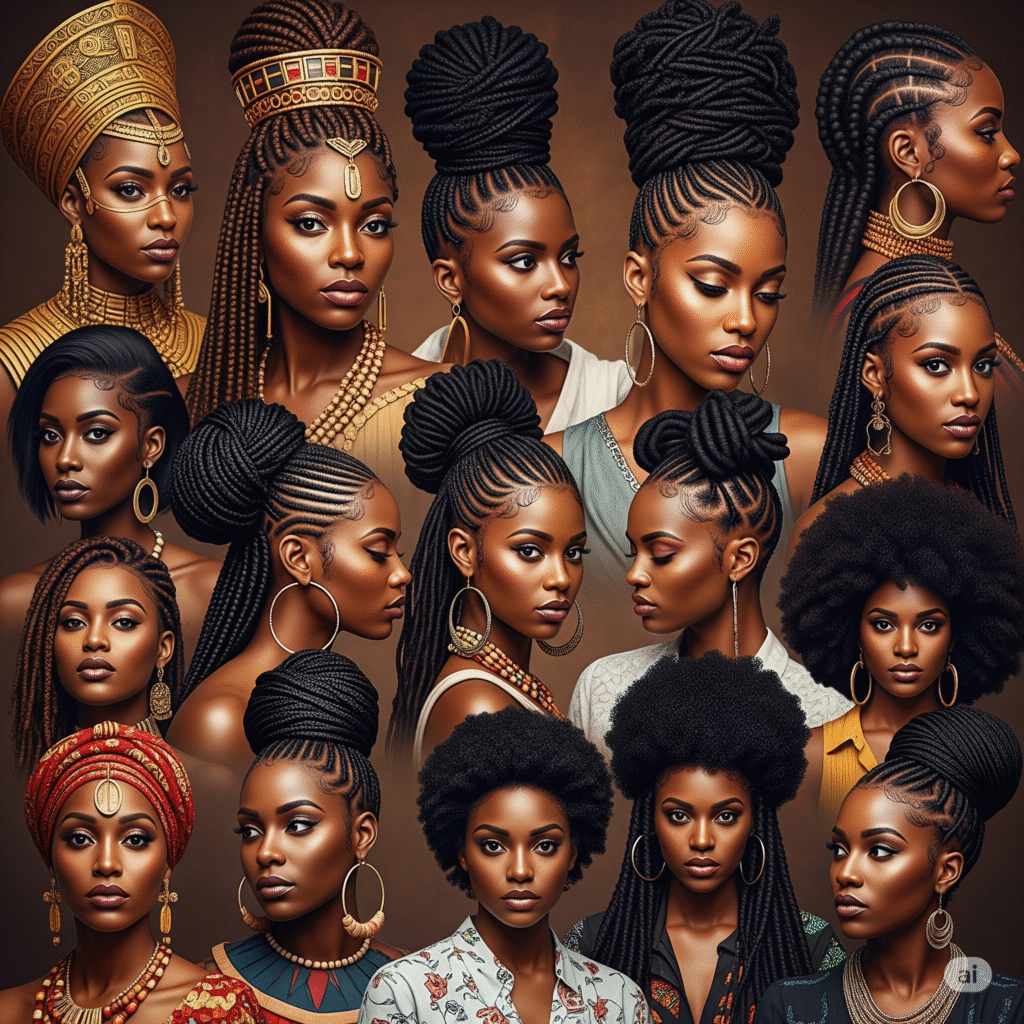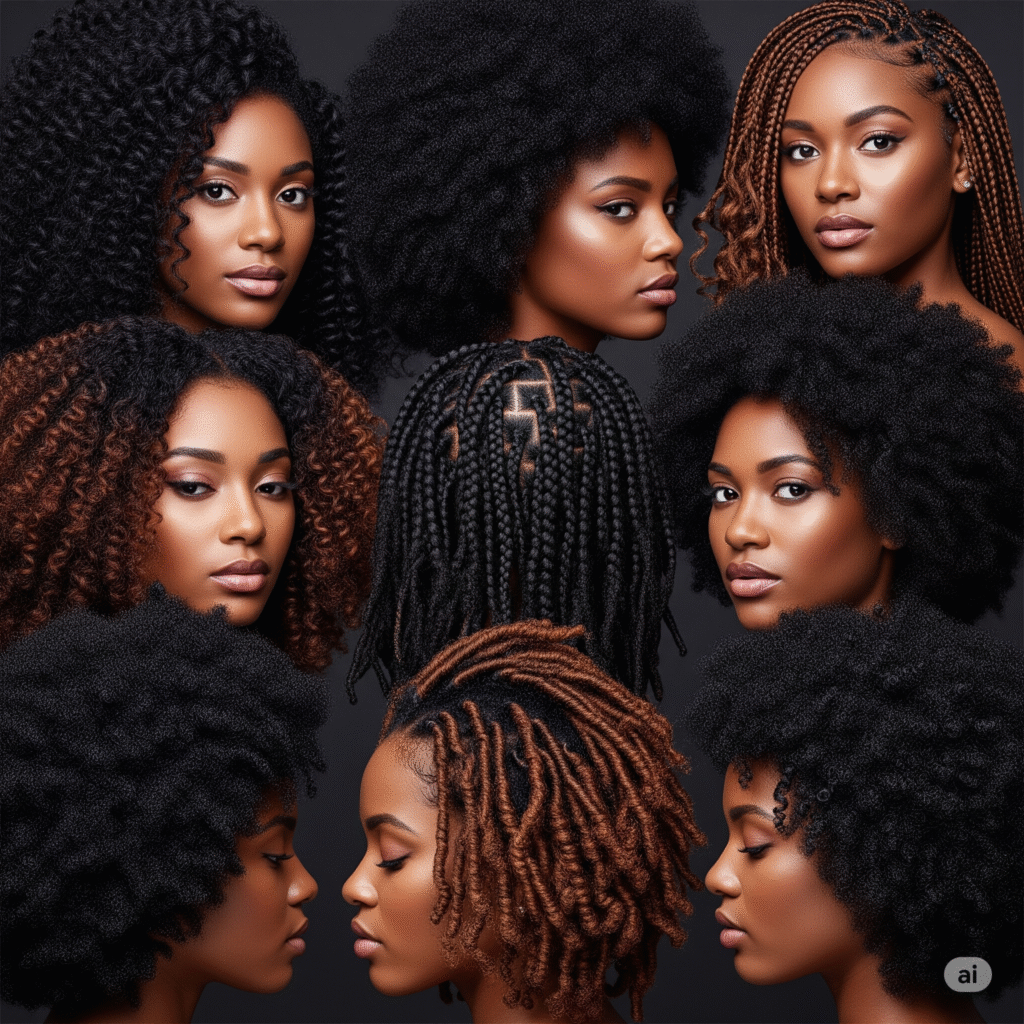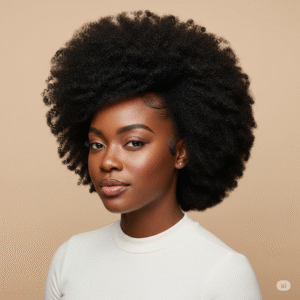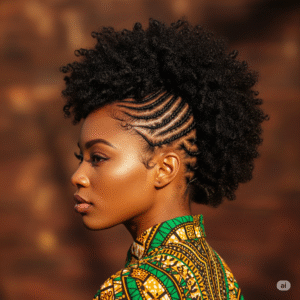The Rich History of African Hairstyles
Long before the advent of modern styling tools, the peoples of ancient Africa were masters of intricate hair design. Archaeological evidence, from the sculpted heads of ancient Egyptians to the rock art of the Sahara, reveals the antiquity and sophistication of these early forms. In ancient Egypt, hairstyles were potent indicators of status and religious belief.

From the intricate artistry of cornrows that map out ancestral stories to the gravity-defying majesty of an Afro proclaiming cultural pride, African hairstyles are far more than mere aesthetics. They are living tapestries woven with the threads of culture, identity, spirituality, and history. Across the vast and diverse continent of Africa, a breathtaking array of traditions has evolved, each telling a unique story of its people. To speak of a single “African hairstyle” is to overlook the profound richness and complexity of these practices. Instead, we must embark on a journey through time and across landscapes to understand the deep significance held within each carefully styled strand.
Long before the advent of modern styling tools, the peoples of ancient Africa were masters of intricate hair design. Archaeological evidence, from the sculpted heads of ancient Egyptians to the rock art of the Sahara, reveals the antiquity and sophistication of these early forms. In ancient Egypt, hairstyles were potent indicators of status and religious belief. Elaborate wigs, often adorned with gold and precious stones, signified power and prestige. Braids, meticulously styled and sometimes incorporating extensions, were common among both men and women. Religious iconography often depicted deities with distinct hairstyles, underscoring their spiritual significance.
Beyond Egypt, other early African civilizations also boasted unique hairstyling traditions. In Nubia, south of Egypt, archaeological finds reveal intricate braided styles and the use of natural adornments. These early examples demonstrate not only a keen aesthetic sense but also a deep understanding of hair manipulation and the use of available resources. The ingenuity and artistry displayed in these ancient hairstyles laid the foundation for the diverse traditions that would follow.

Across the myriad cultures of Africa, hairstyles have served as powerful visual languages, communicating a wealth of information about an individual’s place within their community. They were often intricate markers of age and life stages. For instance, in some cultures, specific braiding patterns might signify a young woman’s readiness for marriage or a man’s transition into adulthood. Marital status was frequently encoded in the way hair was styled, with different arrangements indicating whether someone was single, married, or widowed.
Social ranking and profession could also be discerned through hairstyles. Elaborate and time-consuming styles might denote wealth and leisure, while simpler styles could indicate different social roles. Religious beliefs and spiritual connections were often expressed through specific cuts, braiding patterns, or the incorporation of sacred objects into the hair. Perhaps most significantly, hairstyles often served as powerful markers of ethnic identity and lineage, allowing individuals to visually connect with their heritage and community. The Fulani women, with their distinctive braids adorned with cowrie shells and coins, the Maasai warriors coloring their meticulously styled ochre hair, and the elaborate head wraps (gele) of Nigerian women are just a few examples of how hairstyles can embody deep cultural meaning.
Traditional African hairstyling was and continues to be an art form, passed down through generations, often within families or specific communities. The tools and techniques employed were often simple yet effective, utilizing the resources readily available in the natural environment. Plant-based oils and butters, such as Shea butter and coconut oil, were used to condition and moisturize the hair, promoting health and manageability. Natural dyes, like henna for reddish hues and indigo for dark tones, were used to add color and intricate designs.
Beyond basic manipulation, the artistry truly shone in the creation of elaborate braids, twists, and other structured styles. Skilled hands wove intricate patterns, sometimes incorporating extensions made from natural fibers. Adornments played a significant role, with beads, shells (especially cowrie shells, which held symbolic and sometimes monetary value), and other natural materials being carefully integrated into the hairstyles. Raffia and thread were also used to create unique shapes and textures. The time and skill required to create these elaborate styles often signified social connections and the importance of community, as hairstyling was often a communal activity.
The brutal reality of the transatlantic slave trade inflicted a devastating blow on African cultural practices, including the intricate art of hairstyling. Enslaved Africans were systematically stripped of their languages, religions, and visual markers of identity, including their carefully crafted hairstyles. The forced shaving of heads was a deliberate act of dehumanization, severing ties to their past and imposing a new, subjugated identity.
Despite these horrific circumstances, the resilience of African traditions persisted. Enslaved people found ingenious ways to maintain elements of their hairstyling practices, often in secret or by adapting new materials available to them. The knowledge and skills were passed down through oral tradition, a testament to the enduring strength of their cultural heritage. The negative connotations imposed on natural Black hair during slavery and the subsequent colonial era created a legacy of internalized oppression that would take generations to overcome. The pressure to conform to European hairstyles often led to the use of harsh chemicals and damaging practices aimed at straightening natural textures.
Hairstyles became a powerful form of cultural and political expression during the Civil Rights Movement in the United States and the independence movements across Africa. The rise of the Afro in the 1960s and 1970s was a bold and unapologetic declaration of Black pride and a direct rejection of Eurocentric beauty standards. Its voluminous shape symbolized strength, beauty, and a connection to African ancestry.
The natural hair movement, which has gained significant momentum in recent decades, represents a continued journey of reclaiming identity and celebrating the inherent beauty of natural Black hair in all its diverse textures. Fueled by social media and a growing desire for authentic representation, this movement has empowered individuals to embrace their coils, curls, and waves, rejecting harmful chemical treatments and sharing knowledge about natural hair care and styling. Online communities have become vital spaces for learning, support, and the celebration of natural beauty. The increasing visibility of natural Black hair in mainstream media and popular culture, while still requiring further progress, signifies a growing shift towards inclusivity and the recognition of diverse beauty standards.
The rich history of African hairstyles continues to resonate in contemporary styles both within Africa and across the globe. Traditional techniques like braiding and twisting remain incredibly popular, evolving into countless modern interpretations. Locs, a hairstyle with deep spiritual and cultural roots in various African traditions, have gained widespread acceptance and are styled in diverse and creative ways. Headwraps, or “gele” in Nigeria, remain a vibrant and expressive form of adornment, showcasing intricate folding techniques and bold fabrics.
Contemporary hairstylists and artists of African descent are drawing inspiration from ancestral traditions, pushing creative boundaries and celebrating the versatility of Black hair in innovative ways. They are reclaiming and reinterpreting historical styles, ensuring that these rich cultural legacies continue to thrive. In the modern world, hairstyles remain a powerful form of personal expression, a tangible connection to cultural heritage, and a proud affirmation of identity for people of African descent worldwide.
The history of African hairstyles is a profound and multifaceted narrative, reflecting the continent’s extraordinary cultural diversity, its enduring spirit of resilience in the face of adversity, and its vibrant artistic soul. These are not merely aesthetic choices but powerful symbols – braided narratives and coiled chronicles that tell the story of a people, their history, and their unwavering commitment to self-expression. As we continue to witness the evolution and celebration of African hairstyles, we recognize them for what they truly are: a crown of culture, identity, and resistance, worn with pride and dignity.






